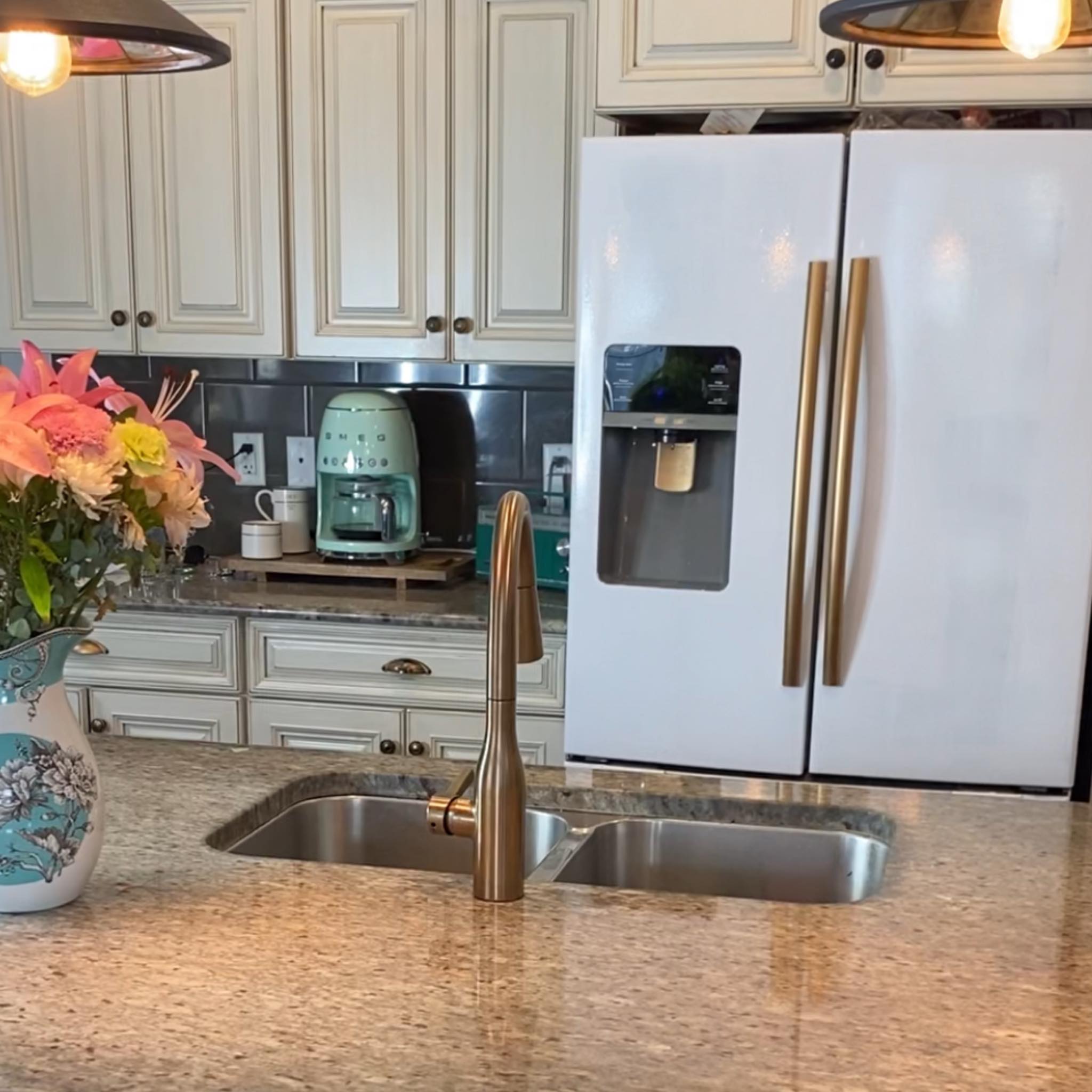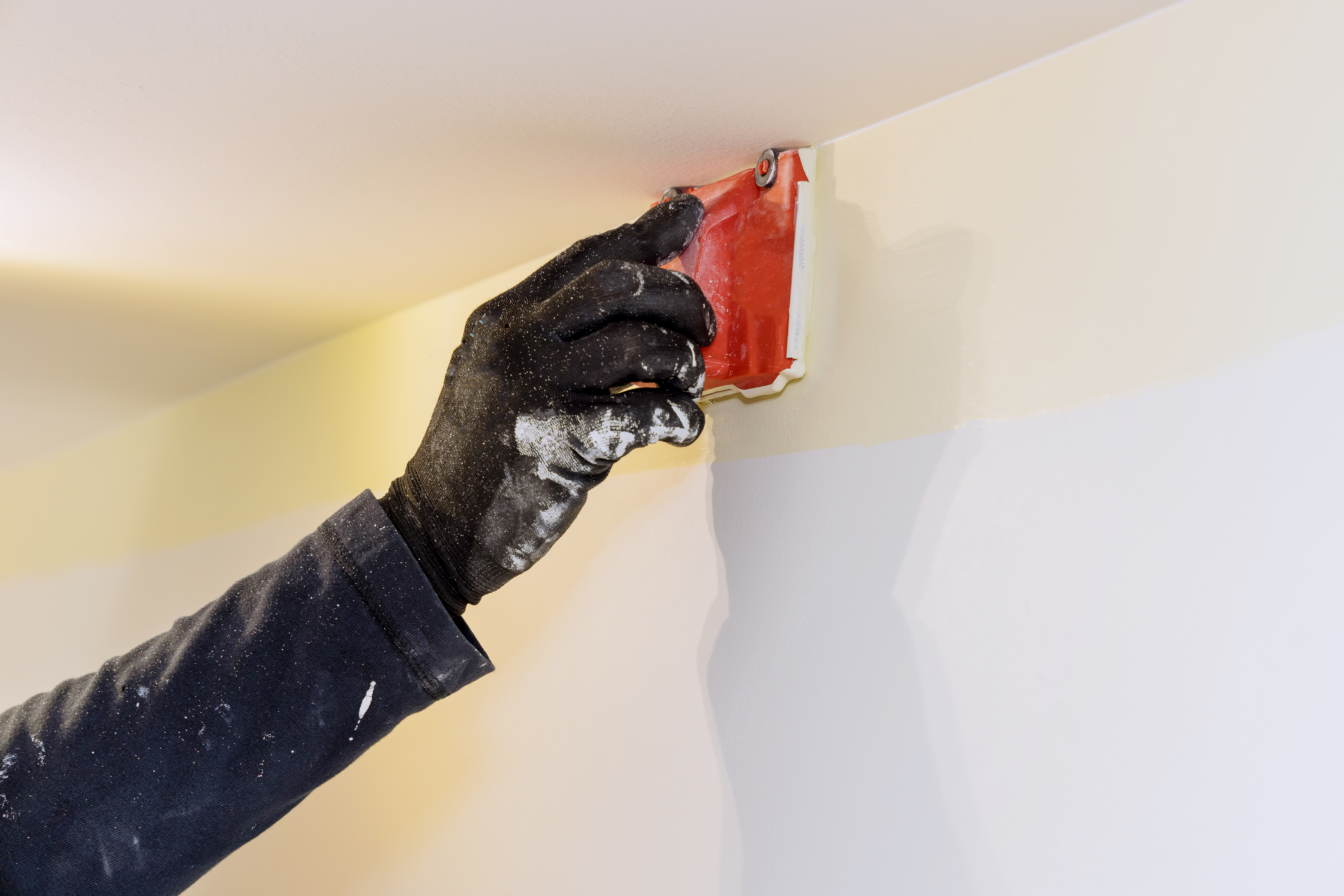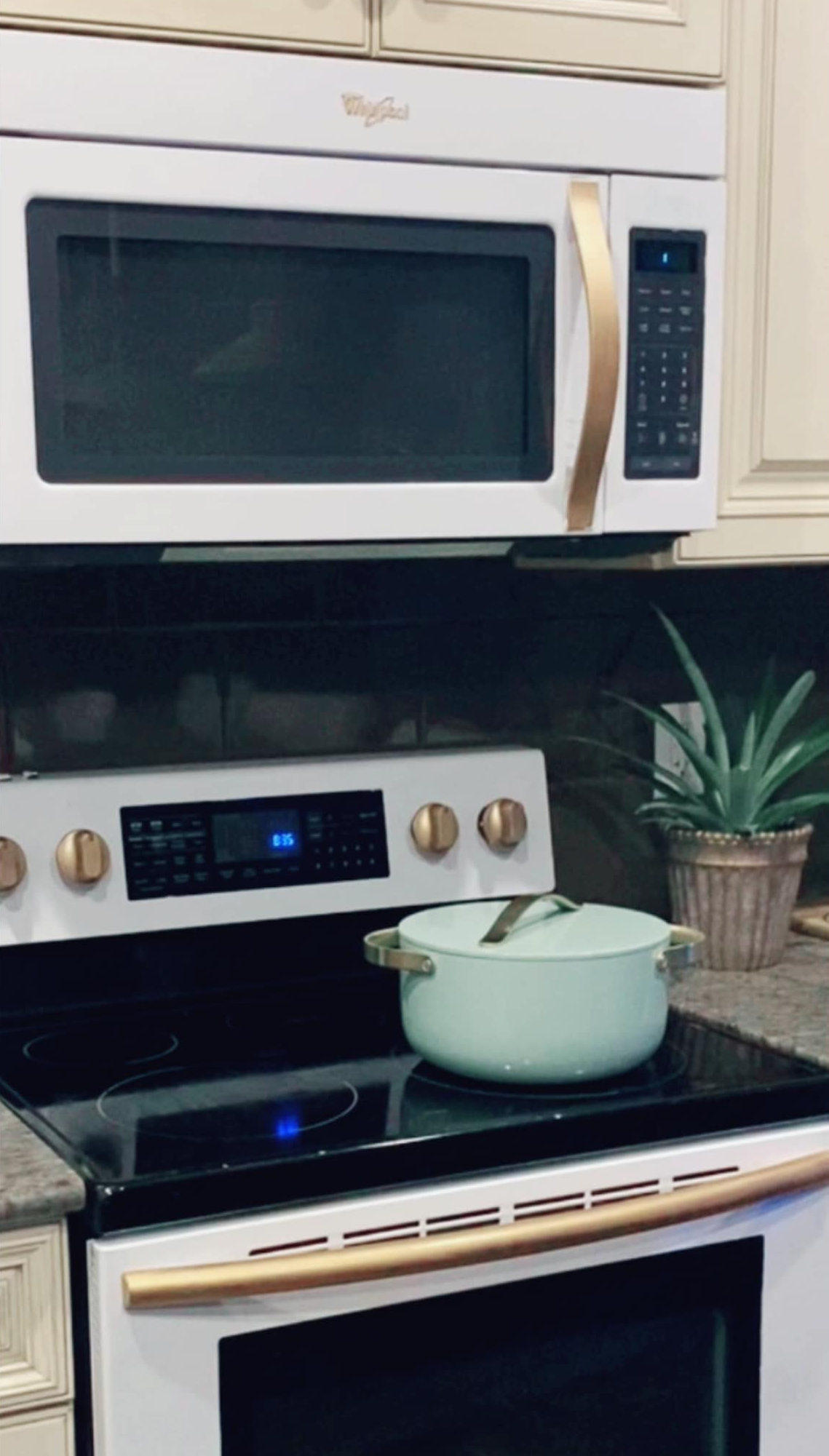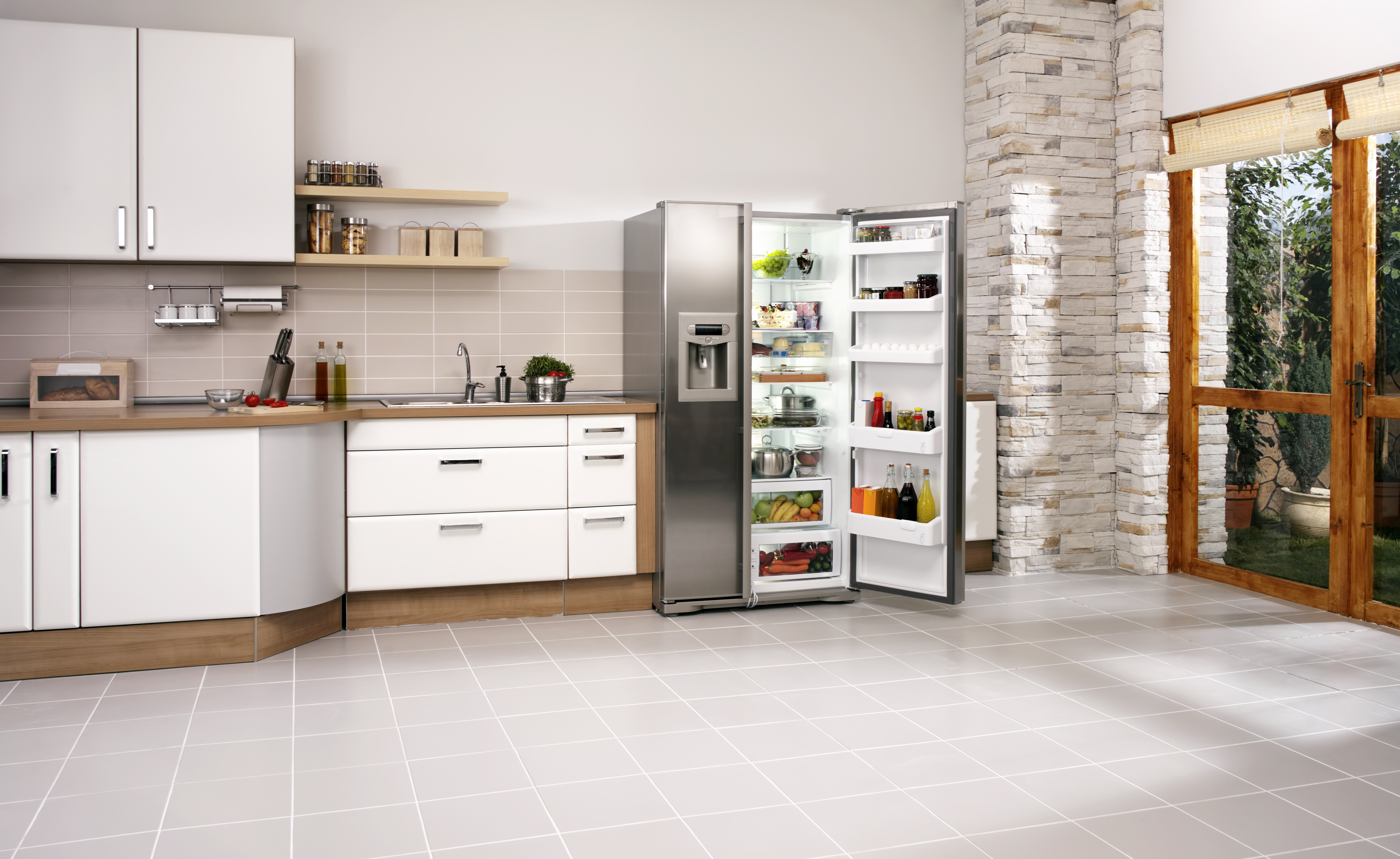
All over Tiktok, YouTube shorts and Instagram reels – the appliance painting trend has officially taken over. After seeing so many snazzed-up fridges, tremendous toasters and unapologetically outstanding ovens, you may be getting the urge to give painting your kitchen goods a go as well.
Before you grab your car keys or start searching for available cabs to Home Depot, we encourage you to read this article and check that what you’re about to do to your modern kitchen is safe.
Especially if you haven’t ever painted an appliance before, how will you know what paint is compatible with the surface and its electrical components? How will it respond to the appliance heating up or cooling down? Will it be a fire hazard? Don’t get caught up in the flurry of pretty clips online before briefing yourself on the safety basics!
We talked to experienced painters and decorators on the matter of safety when painting kitchen appliances. From what sort of paint you should use, how to go about painting, and potentially safer alternatives for sprucing up your kitchenware, we’ve got you covered. Here’s what they had to say.
Why do people want to paint their kitchen appliances?

There are various reasons why a person may consider painting their kitchen appliances aside from seeking to hop aboard the latest trend. Firstly, for many homeowners, painting their kitchenware can be seen as a way to inject personality into a space where they spend a lot of time. Especially for those renting who may be unable to do too much to their home’s walls, devoting time to other parts of their home can be an appealing passion project or way to self-express.
Painting appliances can also serve as a form of general kitchen renovation and maintenance. Similarly to when your cabinets are looking faded or wonkily clinging onto their hinges, gifting your kitchen goods a bit of TLC can give your space a much appreciated refresh.
In terms of cost-factor, too, opting to paint a large appliance such as a fridge or freezer can be a more cost effective way to feel as though you have something new in your home.
Krista Mcewan, who shared her appliance painting on TikTok, felt this way and decided to take on the challenge of painting her old appliances instead of buying new items she was keen on. ‘My kitchen appliances are ten years old! I had been eyeing up the Cafe appliance brand in White and Gold, but I was struggling to justify the price tag since A) my appliances still worked fine and B) I wasn’t sure if I would actually like the white and gold color combo in my kitchen,’ says Krista. ‘Plus I wanted the challenge to see if I could truly recreate the look I was going for!’
Roxanne Kwiecinski of The Honeycomb Home also painted her niece’s old white fridge to look like stainless steel as part of a more affordable home renovation project.
‘We painted the appliance because it’s an affordable way to get the look of stainless steel without actually buying new appliances,’ says Roxanne. ‘Keep in mind though, this is a good TEMPORARY solution as painted appliances will most likely chip over time with heavy use, especially a stove.’
Is it safe to paint your appliances?

When seeking to learn about the safety of painting your appliances there are a number of important factors to think into: what appliances are you planning to paint? What parts of the appliance do you wish to paint? Which parts of the appliances does your paint need to avoid? – the list goes on.
Anthony Kulikowski, owner of Five Star Painting (a Neighborly Company), emphasizes the importance of understanding safety precautions prior to picking up a paintbrush. ‘For the most part it is safe to paint most appliances,’ says Anthony. ‘Make sure to follow all manufacturer guidelines and all safety precautions, especially with ventilation, and read what different types of paint say on the can.’
If you’re painting an oven, Anthony says to ‘make sure to use paint with a high heat resistance’ to ensure it won’t crack or be prone to flammability when your oven is switched on. Krista further adds to make sure to ‘never paint any surfaces that get hot, such as the top of your stove or the inside of your oven’.
To be mindful of ventilation while painting, make sure to open your windows and doors, take frequent breaks (especially if you’re feeling dizzy), and wear a face covering if you can to avoid breathing in paint fumes.
‘Most appliance-type paints and primers will be solvent-based, meaning they have a higher VOC (Volatile Organic Compound) content, and the odor is much stronger than standard paint,’ says Anthony.
Roxanne echoes Anthony’s points, recommending that beginners use an appliance painting kit instead of just choosing paints from a store. ‘It is safer to paint appliances if you use a kit made for appliances with low VOC’s and low odor,’ says Roxanne. ‘We used a kit called Liquid Stainless Steel from Giani paints.’
How should I paint an appliance?

A great project begins with adequate prep, so before diving right in make sure to take time to clean and prepare the surface of your appliances for painting.
‘Similar to most painting projects, you’ll want to make sure to start with cleaning and then sanding, priming, and painting,’ says Anthony. ‘Depending on the color and how you choose to apply the paint, multiple top coats may be required. Spraying the paint is the best way to get a factory-type finish, but you can use a roller as well. Just know going in that, even with a foam or mohair roller, you may still get a little texture when rolling.’
When using a kit the process of applying paint to your appliance may slightly differ, so definitely read the packaging! ‘Be sure to prep the surrounding areas, mix the paint very well and apply several thin coats (allowing proper drying time in between) until you get your desired coverage,’ says Roxanne. ‘Our kit also came with a glaze sealer that we applied at the end.’
If you’re planning on painting multiple appliances in your home, Krista recommends being tactical about the order in which you paint. ‘I started with my stove, with the thought process of “it would be the cheapest to replace if I totally messed it up”,’ says Krista. ‘After that I painted my microwave, then the fridge.’
Are there any alternatives to spruce up my appliances?

If the idea of painting your appliance feels like a daunting task to take on alone, and enlisting help isn’t what you planned, there are alternative options to make your kitchen appliances look fresh. Although, this all depends on what sort of look you’re going for and whether you believe the time needed to paint your appliances is a worthwhile investment.
‘Quite honestly, unless you want to paint because your appliance is a restoration project or a labor of love, it may not be worth the time, money and effort it requires to repaint an appliance,’ says Anthony.
Speaking to the manufacturer of your appliances directly to ask about shell coverings is an alternative avenue offered by Anthony for changing the appearance of your electricals. ‘Instead of painting, you can check with the manufacturer to see if a new shell color is available, or if a specific panel that may be damaged or scratched on your current appliance can be ordered and replaced,’ says Anthony. This professional route eliminates the worry of not knowing what you’re doing, ensuring a job well done.
Although, as noted by Krista, waiting around to wrap your appliances can be more time consuming, especially for those already comfortable with painting: ‘I did not wrap my appliances because I wanted immediate results and I’m very comfortable painting, as I have redone many pieces of furniture for my home.’ It’s a matter of preference!
Injecting a fun, new vibe into your space can be otherwise achieved in smaller ways such as investing in some funky fridge magnets, adding character to a space you may have grown tired of. You can bring the same sort of energy to your oven through switching out your oven gloves and dish towels, hanging them over the front door handle if you have one when the oven isn’t in use. These options may not change the appearance of the appliance inherently in itself, but they can serve as an affordable, renter friendly way to bring change into your home relatively quickly.
Stay safe!







